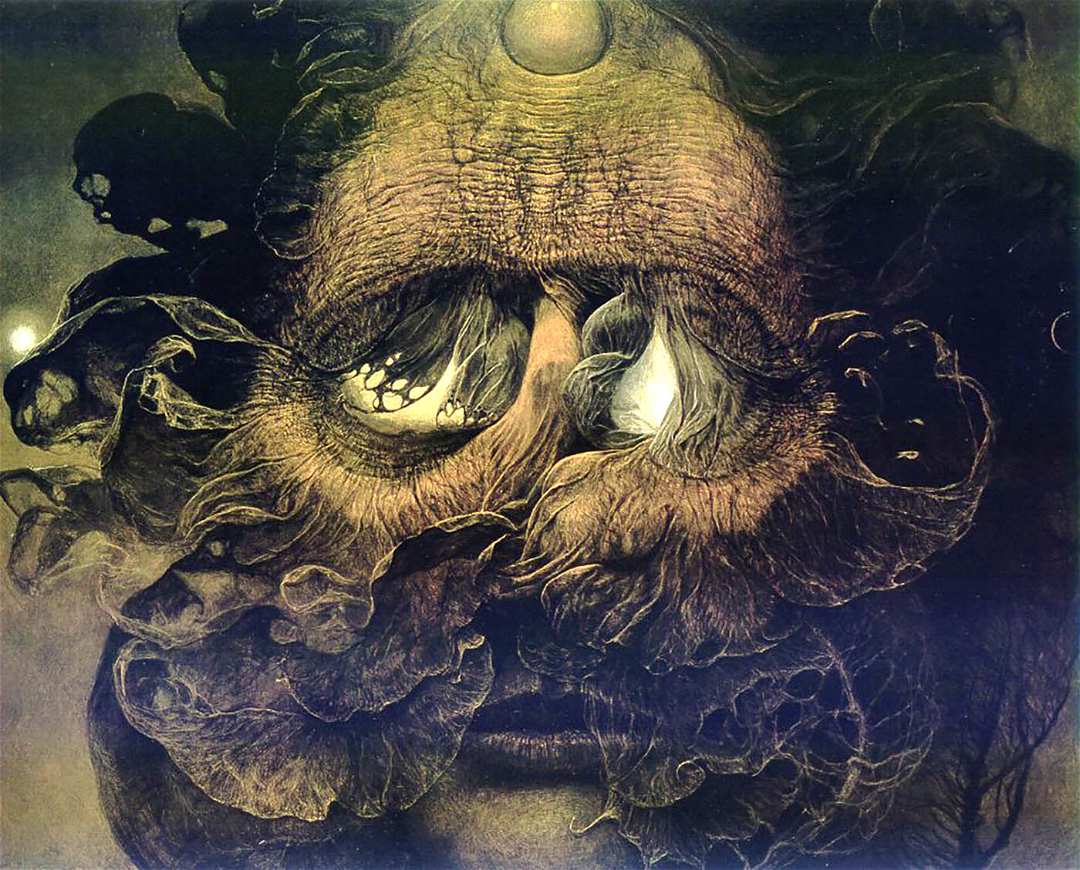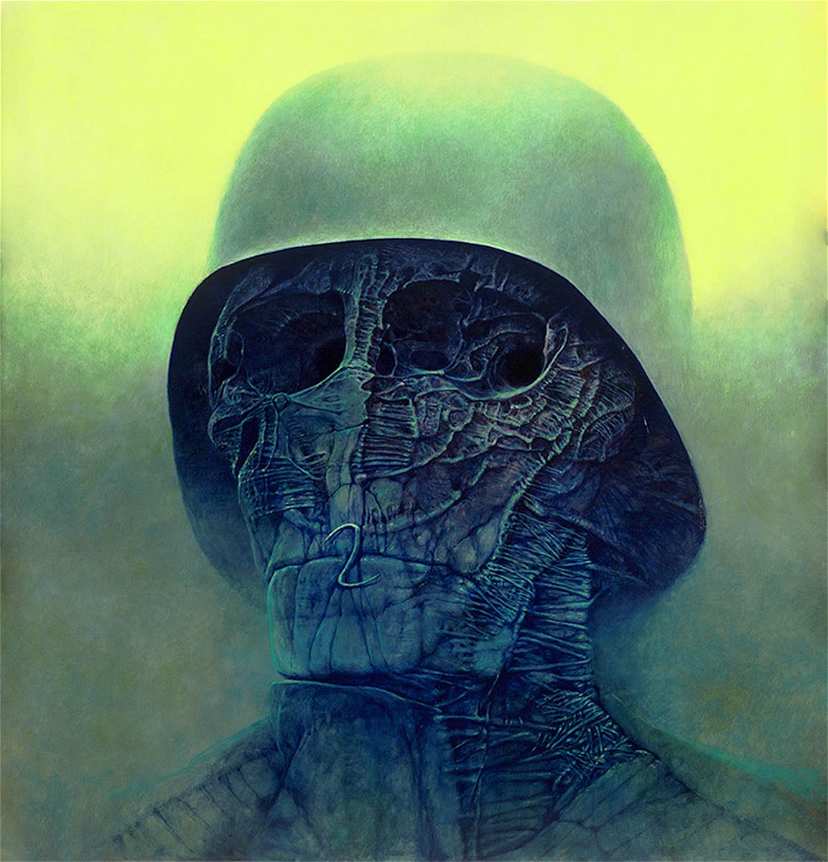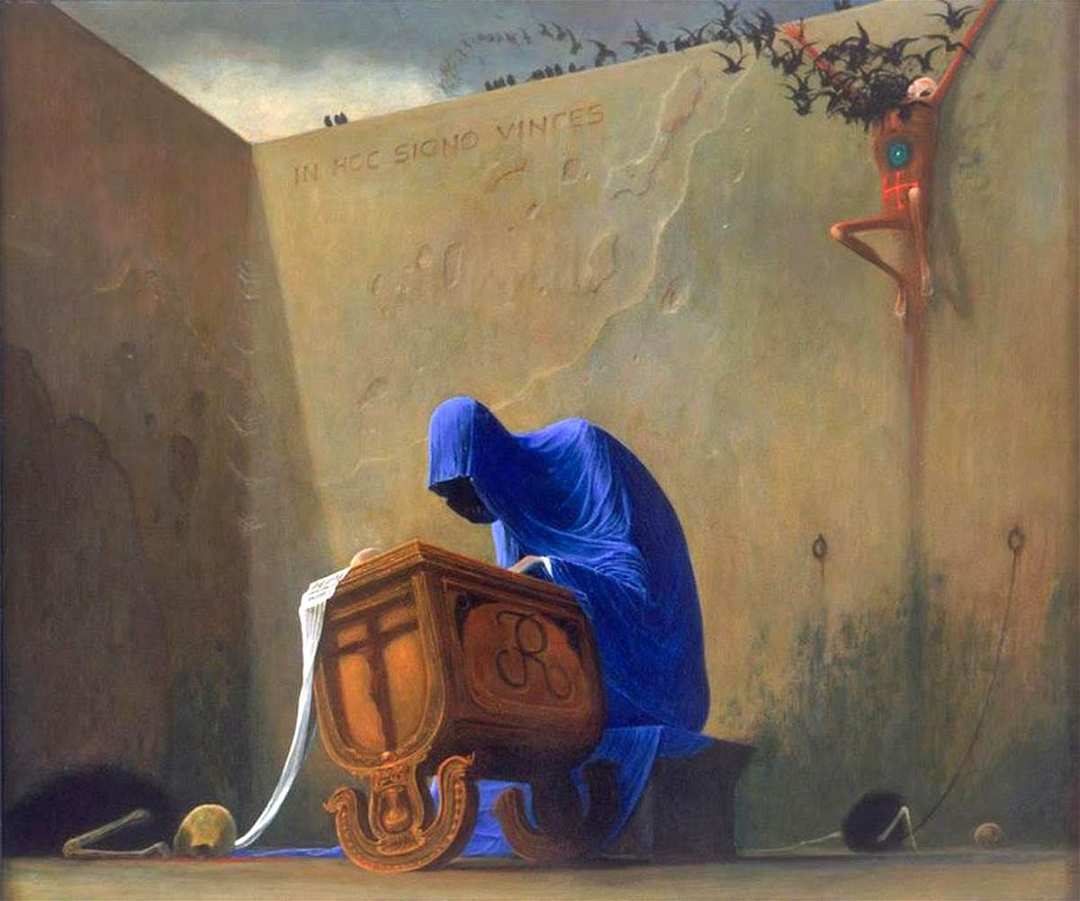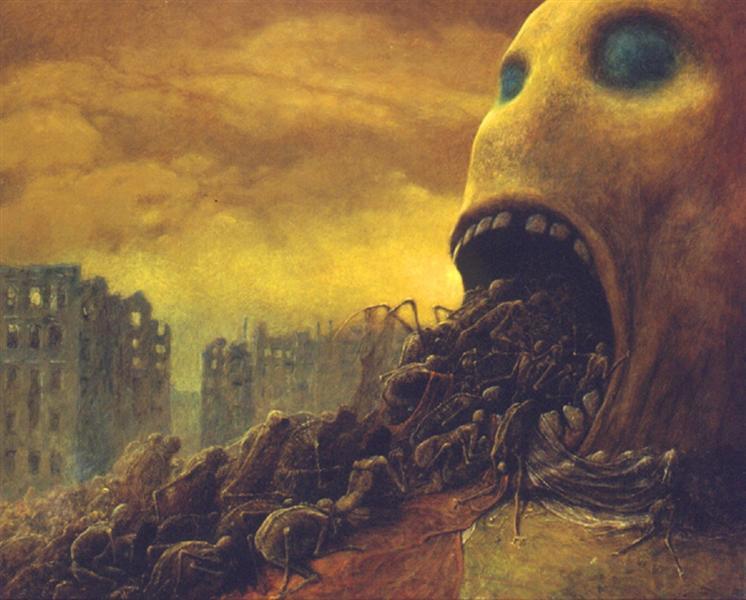“In the medieval tradition, Beksinski seems to believe art to be a forewarning about the fragility of the flesh — whatever pleasures we know are doomed to perish — thus, his paintings manage to evoke at once the process of decay and the ongoing struggle for life. They hold within them a secret poetry, stained with blood and rust.” — Guillermo del Toro
The life and death of Polish painter, photographer, and sculptor Zdzisław Beksiński has been sensationalized, made into a cursed tragedy in the telling of events late in his life that, taken together, all seem horrifying enough: the death of the artist’s wife from cancer in 1998, the suicide of his son, Tomasz, one year later, and, finally, his own stabbing death in 2005 at the hands of his caretaker’s teenage son. If we add to this account Beksiński’s childhood in Nazi-occupied, then Soviet-occupied Poland, we have ample reason to speculate about the meaning of his nightmarish visions.

But the “Nightmare Artist,” as he’s called in the video above, wants us to stay away from making meaning of any kind. Unlike artists whose work can seem inseparable from their statements of purpose (or personal or historical tragedies), Beksiński had nothing to say about his art or his life.
He preferred that others keep silent as well, though he himself hated silence, working to loud classical music and rock. Music, he said — not literature, film, history, or even other artists — was his only inspiration. The impression we get from these scant details and Beksiński’s disturbing work, is of an individual probably best left alone.

Judging an artist’s body of work by the worst things that have happened to them, however, is manifestly unfair. For the majority of his life, Beksiński embodied the famous Flaubert quote about a regular, orderly creative life. He studied architecture, went on to supervise construction projects and then design buses. Like many people, he hated his job (he left the bus company in 1967). He developed a passion for photography, sculpture, and painting. With no formal art training, he struck out on a successful fifty-year career as a prolific Surrealist, becoming a master of oil painting. Was he tormented? Those who knew him describe him as mild-mannered, pleasant, even funny. He seems to have been quite content.
Do we resist interpretation as Beksiński wanted? How can we, when the imagery of death in his work seems itself to interpret events that inevitably shaped his world? Beksiński was born in Sanok, in southern Poland, in 1929. When the Nazis came to Poland a decade later, Sanok’s population was “about 30% Jewish,” notes the Collector, “nearly all of which was eliminated by the war’s end.” Decades later, Nazi iconography and crowds of gaunt, corpse-like figures began to recur in Beksiński’s paintings, which he described as “photographing dreams.” These horrors predominate in his most popular work, even though Beksiński’s vision had more breadth than casual fans might know.
His sense of humor is evident in his photography, and in early, more abstract, paintings, he displays a much lighter touch. (See a broad sampling of Beksiński’s work at Artnet.) In the 90s, he began experimenting with computer graphics and “was granted his wish of being able to add surrealistic alterations to photographs,” bringing his career “full circle as he returned to his first medium,” notes Culture.pl. Yet, like his contemporary H.R. Giger, where Beksiński’s name is known, he’s usually known as a painter of nightmares and heavy metal album covers — and for good reason.
The Several Circles video on Beksiński above (which opens with a content warning) shows why his “epic universe of hellscapes” has proven so inescapable to the critics who embraced his work, the gallerists who sold it, and those who have discovered it since the artist’s tragic death.
Related Content:
An Introduction to Surrealism: The Big Aesthetic Ideas Presented in Three Videos
The Forgotten Women of Surrealism: A Magical, Short Animated Film
Josh Jones is a writer and musician based in Durham, NC. Follow him at @jdmagness


0 Commentaires